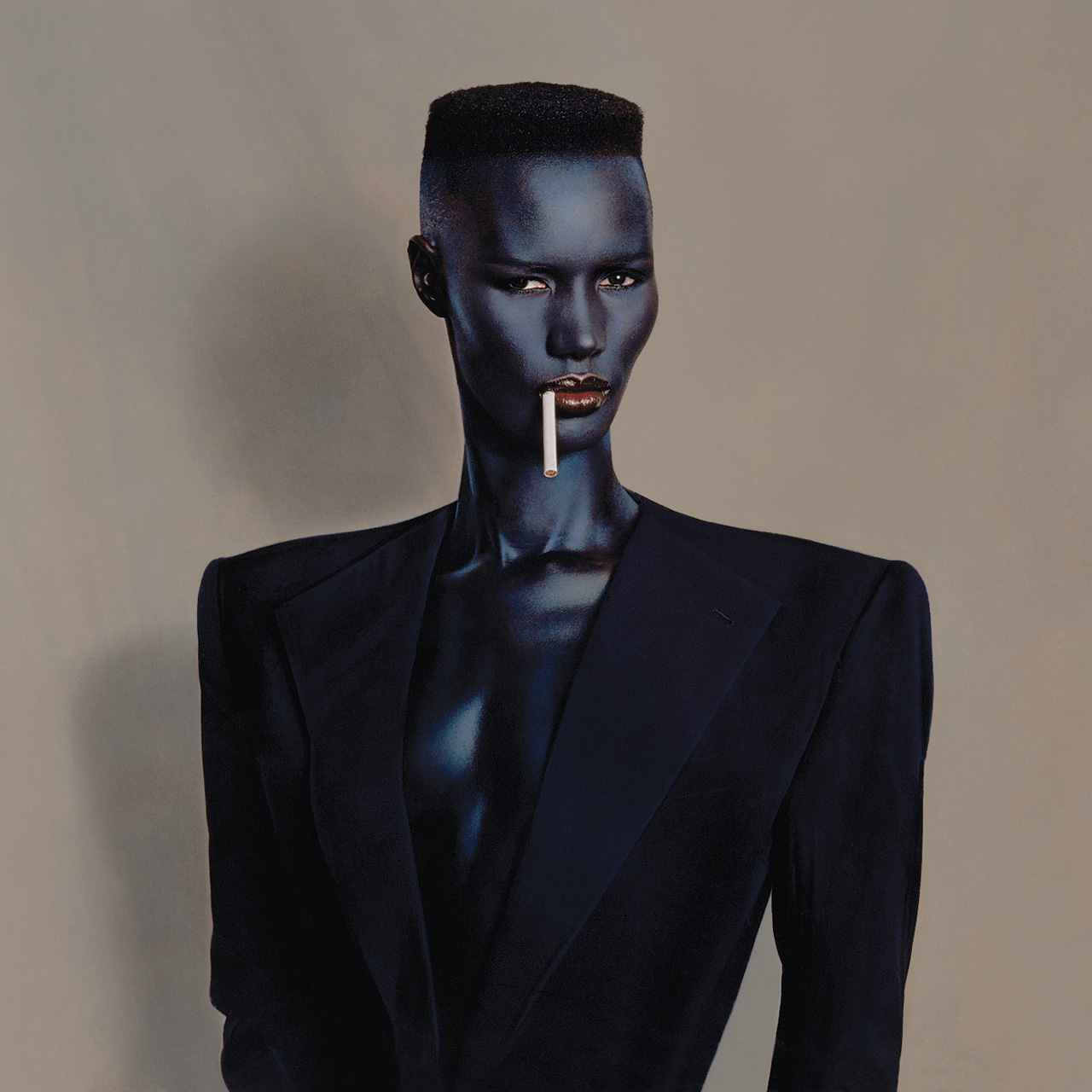
Grace Jones by Jean-Paul Goude, for the album Nightclubbing, 1981
Lady Gaga, Miley Cyrus, Nicki Minaj, Rihanna—before all of them there was Grace Jones. Last week it emerged that the legendary 67-year-old singer views it that way, too. The latest generation of female music stars isn’t challenging the status quo with all the dressing up, face-pulling, bare breasts, and fractured beats, scoffs Jones. These days, as she rightly says in her forthcoming memoir, “that is the status quo.”
Nightclubbing was her fifth album and many regard it as her best. She began as a model, became a regular face at Studio 54, a disco queen and gay icon, and then changed musical direction in 1980 with Warm Leatherette, a new wave album that attracted a cross-over audience coming from the rock scene as well as disco. Nightclubbing (1981) has Jones’ tenderly aloof remake of David Bowie and Iggy Pop’s “Nightclubbing” from The Idiot, as well as the ferocious “Demolition Man” written by Sting. Her voice is as imperial and commanding as her image on the sleeve, like a piece of sculpted obsidian.
I always assumed that Nightclubbing’s front cover was a photograph taken and retouched by Jean-Paul Goude, Jones’ visual collaborator and stylist. But when I dug out the original vinyl LP to check the cover credits, I found it was described as a “cover painting.” Nevertheless, the credits for “Hair and Make-up by Jean Paul [sic] Goude” and “Jacket by Giorgio Armani” imply a photoshoot, so this must be the image’s origin, and Goude often modified his photographs of Jones.“Feeling like a woman. Looking like a man,” she intones in “Walking in the Rain,” which opens the album. In the early 1980s, Jones’ androgyny came as a startling provocation for straight viewers who had never seen a female singer present herself in this fashion, and it was culturally prophetic, too. She had rebelled against her Jamaican family’s hold on her, and this led her to question all her relationships with men. “I think that is what contributed to my masculinization,” she told Goude. “I deliberately challenged men’s roles. In fact, I survived by taking on both roles.”
Goude admired Jones for her mixture of beauty and threat, and the Nightclubbing portrait expresses this duality with absolute composure and no false histrionics. The cover picture became the starting point for Jones’ brilliantly performed “A One Man Show” tour in 1982, which Goude made into a film. Jones has the dance moves when she needs them, but her raw charisma heats the air whatever she does. A true original, she has cold fury in her soul and casts a long shadow.
See all Exposure columns


Comments [1]
10.29.15
12:40